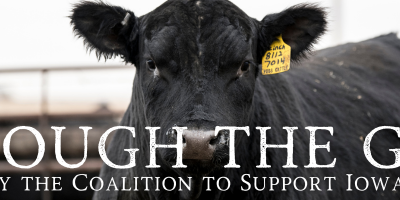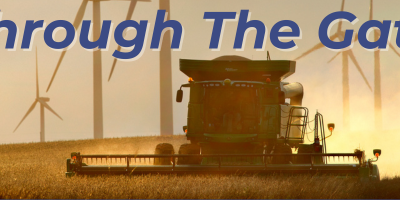CSIF Tips of the Month – February 2013
02-01-2013 in Through The Gate
Rules and Regs Highlight:
DNR to Inspect ALL Medium and Large CAFOs
Over the next 6 years, the Iowa DNR will be inspecting all medium and large concentrated animal feeding operations (CAFOs) in the state. These inspections are being required by EPA who, after being sued by environmental groups, has required DNR to make a few changes to how it regulates CAFOs.
Initial estimates predict DNR will be doing approximately 1,600 farm inspections per year in order to meet their deadline. They have prioritized certain items to help them determine which inspections will be done first. The priorities are: animal feeding operations (AFOs) with spills or complaints; large open feedlot CAFOs and medium-sized open feedlot AFOs; all AFOs with discharges in the last 10 years; large CAFO CFOs; and finally, medium sized CFOs.
DNR has indicated that the inspections will be similar to past manure management plan (MMP) inspections. During an inspection, DNR field staff will most likely be reviewing inventory records, MMP records, and doing site visits of the livestock feeding operation. DNR will be walking around livestock facilities more than in the past and will also be inspecting down gradient from the AFO, looking for any potential discharges. Some of the things they may be looking at include: feed storage areas, mortality composting facilities and areas where manure has been spilled during pumping or hauling. They will also be inspecting tile lines around manure pits (to see if pits are leaking).
When contacted by DNR, it is the farmer’s responsibility to communicate the biosecurity policy of the farm to DNR staff. For additional tips to help you prepare for an inspection, click here.
If you have questions or concerns, feel free to contact the Coalition to Support Iowa’s Farmers at 800-932-2436.
Inspections and Head Count
During these inspections, DNR may be asking for inventory records. How many head do you currently have? Perhaps more importantly, how many are you permitted for?
Why is this important? For example, say you have a hog barn permitted for 2,496-head (998.4 animal units for finished market hogs – just under the 1,000 animal unit threshold). Even if your pig supplier overstocks the barn, you are still required to stay under the animal unit threshold you are permitted for. Pigs less than 55 pounds count as 0.1 animal units. Pigs over 55 pounds are 0.4 animal units. So, as long as the pigs are less than 55 pounds, you legally can have more than 2,496 head in the barn. But, once they are over 55 pounds, you must be at or under the number you are permitted for (in this case, 2,496).
As always, don’t hesitate to contact us at 800-932-2436 with questions or concerns.
Siting Tip:
Check for Alluvial and Karst Soil Types
If you’re thinking about building a new livestock or poultry facility, there are many things to think about. Depending on the size of the facility, there may be separation distances that must be met. However, if you’re building a confinement, no matter the size, you must check to see if the proposed site is in alluvial or karst soils.
No manure storage structure can be built on alluvial soil, i.e. a one-hundred year floodplain. This is defined as land that has a one percent chance of being flooded in any given year and is adjacent to a major water source. DNR has designated all of the floodplains in the state. If you find your site is listed as potentially alluvial, you can request a determination from DNR.
Additionally, farmers must determine if they are on karst soil. Karst soil types often have sinkholes or solution channeling; this generally happens in areas with underlying limestone or dolomite. Anaerobic lagoons and earthen manure storage basins can’t be built at sites located in karst soils.
For more assistance properly siting a new livestock or poultry facility, please contact us at 800-932-2436 or visit www.supportfarmers.com/siting.
Quote of the Month:
“I would strongly suggest using the Coalition because they answered tons of questions and did a bunch of leg work for me so that I didn’t have to take time out of my busy schedule.” – Dan Speicher, who turned to CSIF for assistance after his farm was inspected by EPA
Recommended News

Through the Gate // January 2025
Stay updated with the Coalition to Support Iowa's Farmers. Discover events and more.
Read More
Through the Gate // December 2024
CSIF Executive Director Brian Waddingham says inspections are on the rise, and it’s important to know not only the rules and regulations, but your rights. “With an
Read More
Through the Gate // November 2024
Are you ready for a DNR inspection? CSIF Executive Director Brian Waddingham says inspections are on the rise, and it’s important to know not only the rules and regulations, but...
Read More